Content marketing should explicitly be about promoting the right content to the right audience at the right time in order to achieve your marketing goals
Whether you're creating content from scratch or refurbishing existing content, your goal should be to engage and entice your target audience effectively on different platforms and, ultimately, prompt action.
Your blog posts, videos, infographics, contests and ads all need to be perfectly aligned with the buyer’s journey. This means you need to understand the awareness, consideration and decision stages.
Download our Premium Resource – Content marketing strategy e-learning course
Use our course to step through the analysis, planning and implementation activities which will take your content marketing to the next level.
Access the
However, it’s quite difficult - if not entirely impossible - to do this without having a documented plan that covers effective distribution of your content. At the same time, your content marketing campaigns may end up not serving the entire buyer’s journey, resulting in wasted resources and budget, as you'll be creating and promoting content that isn't goal-focussed.
It goes without saying that with so much information out there, failing to deliver the right content will mean it is ignored, just like a passing billboard on the freeway.
In this back-to-basics article for experienced content marketers - which will also be helpful for less-experienced content marketers and SMEs - we’ll show you how to reduce the likelihood of your content being ignored by your target audience.
Know who you are writing content for
Creating content that has the potential to make an impact all starts with understanding your audience, which means you need to have your buyer personas in mind at all times. These need to be carefully and thoroughly planned, making sure that your personas' mindsets are mapped out at every stage of the journey.
Let’s demonstrate this by using an example of a fictional medical company, which sells a supplement - Fertomol - which boosts female fertility. For the sake of this article, we will keep the buyer persona - who we will call Ivanka - very simple. We will focus on the first three stages of the buyer journey, as these are the most vital.
Buyer persona and mindset during the buyer's journey


[Statistic source]

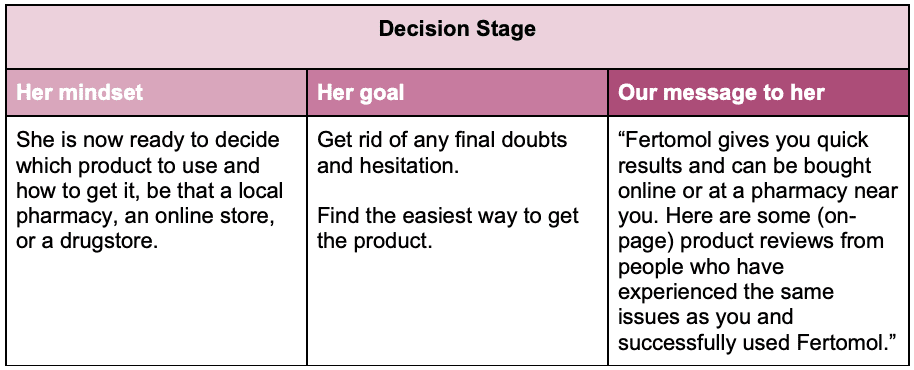
Our message to this persona is not verbatim, but what we show here is the core idea behind what we want to convey in our content.
Satisfying your buyer persona at every stage with the right content on the right platform is vital too. Someone browsing on Facebook, for example, is not necessarily at the same stage as someone who is actively searching on Google. Taking this into consideration, you will end up with something that looks like this:
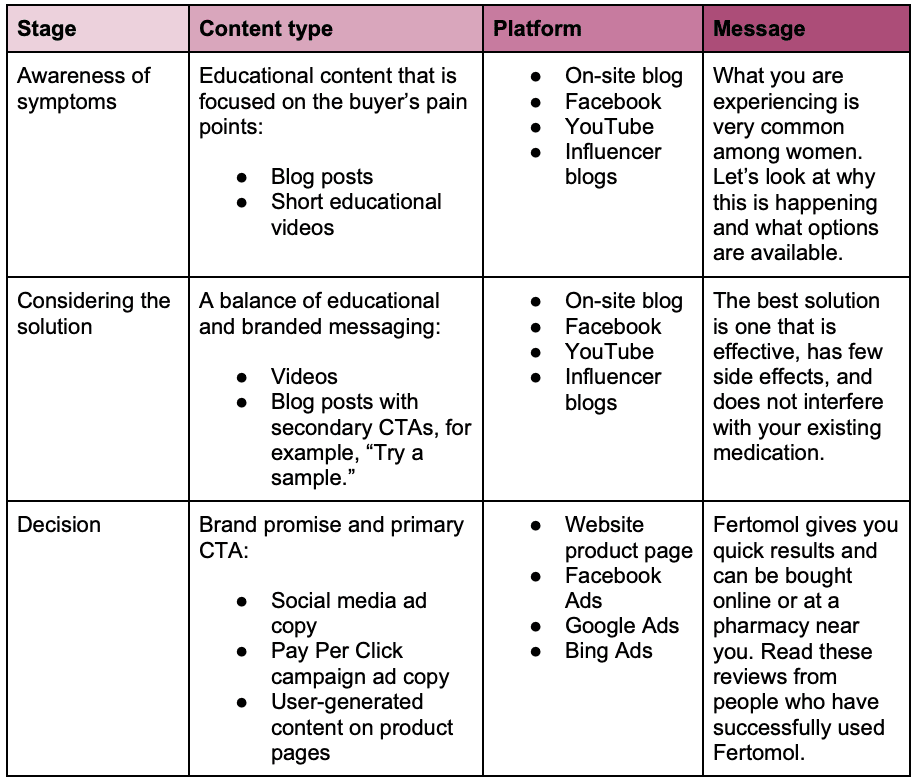
Make a plan and stick to it
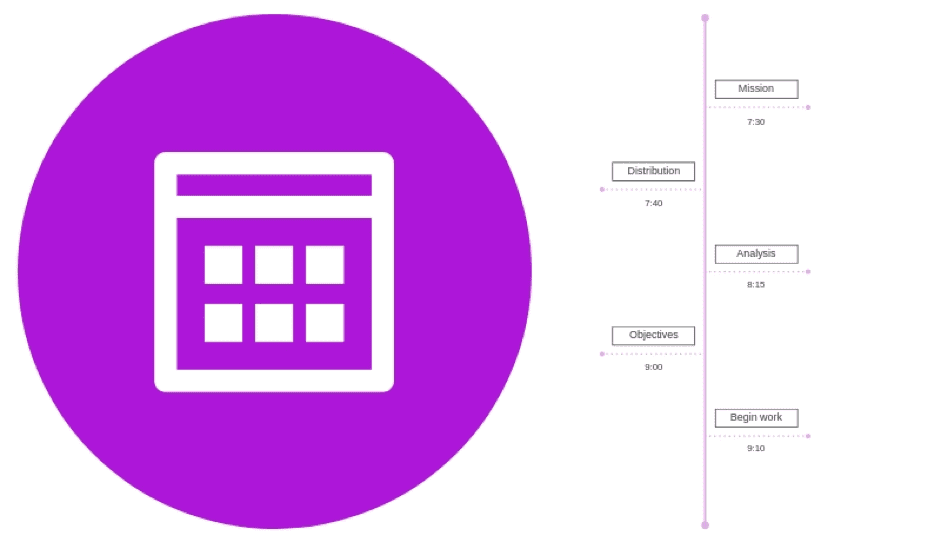
Now you know who your content is addressing and what general message your audience needs to hear at each stage of the buyer’s journey, it’s time to make a plan to ensure that we take the proper practical steps to market the right to content to them at the right time.
Your plan should have at least the following three components:
- Editorial mission statement
- Content distribution plan
- Content delivery
Editorial mission statement
You can use an editorial mission statement to spearhead your content creation efforts. It focuses on your buyer persona, including who they are and how your content can best serve them. You should also use this to measure and evaluate the relevance of your content. If any of your content, whether it’s a 200-character tweet or a 2,000 long-form blog post, does not represent your editorial mission, you should refine it until it does.
Your editorial mission defines what you represent and share as a content creator. Once you’re clear on this, it becomes a filter, through which you should pass all of your content ideas. With an editorial mission statement, you’ll be able to focus on creating content that is relevant to your audience, rather than worrying about how a piece of content will be received by your prospects and clients.
Below is an example of an editorial mission statement based on our fictional product, Fertomol.
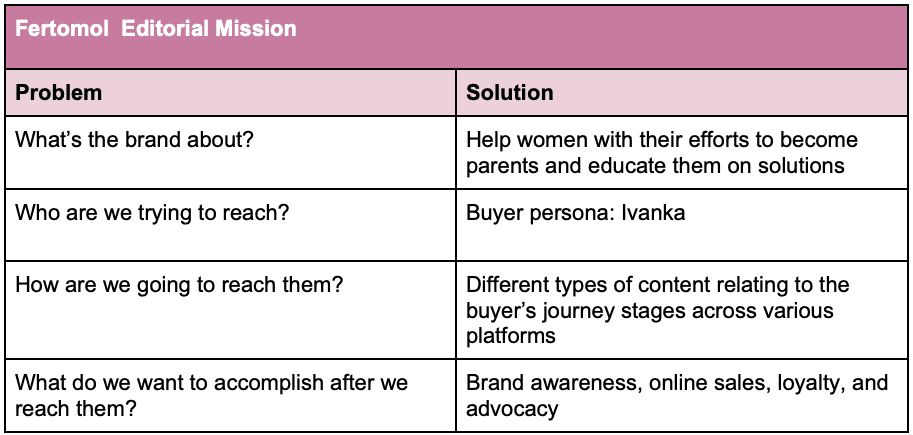
Content distribution plan
In order to reach the right audience, you must have a content distribution plan containing the following:
- Situational analysis
- Channel objectives
- Content plan
- Metrics
1. Situational Analysis
Use a situational analysis to look at your current content marketing efforts and determine where you can improve in order to deliver the most impact with your message. Situational analysis will help you decide on your priorities, including budgeting.
You will typically need to ask yourself the following questions:
- How are we currently distributing the content we create?
- What do we need to add or improve?
- What do we need to stop doing?
2. Channel objectives
Every channel must have its own purpose, so define why you are using a certain channel and what goals you want to achieve. For example, you may decide to use Facebook to increase brand awareness and re-engage customers.
This is where many businesses, both big and small, struggle, leading them to end up posting content for the sake of it or - even worse - cross-posting the same content across every network.
3. Content Plan
This is where you create a basic outline, around which you’ll organize content for every channel you use to engage your target audience. Let’s say you want to use community building as a strategy to closely engage prospects.
You could use Facebook as your primary channel to funnel loyal traffic to your site and build your community. The first tactic in your content plan for Facebook might be a community-building action, such as a competition to increase your reach and likes on the platform.
4. Metrics and Goals
Finally, it’s vital to measure if what you are doing is working. But what metrics should you look at to determine success?
A good goal is clear and not only looks at quantities, but also states a deadline when it should be achieved by. Setting a goal of achieving 200 subscriptions is vague. Do you want to achieve that in two weeks or two years? A clearer goal would be to achieve 200 new subscriptions in a twenty-day period.
When you combine the four components, you’ll have a roadmap you and your team can follow:

Content delivery
You’ve now got a solid plan in place and you're ready to put it into action. You wouldn’t spend months, or even years developing a new product or service and then launching it without a proper plan in place and it’s important not to do the same with your content. Many businesses know their personas and platforms inside-out but still find their content is being ignored because they don’t execute it effectively.
To make sure your content is always relevant and captures the attention of your target audience every time, follow these steps:
Always use a visual
According to Hubspot, posts with images get 2.3x more engagement on Facebook. Have a visual policy in place to ensure your content marketing team and hired freelancers use relevant images consistently.
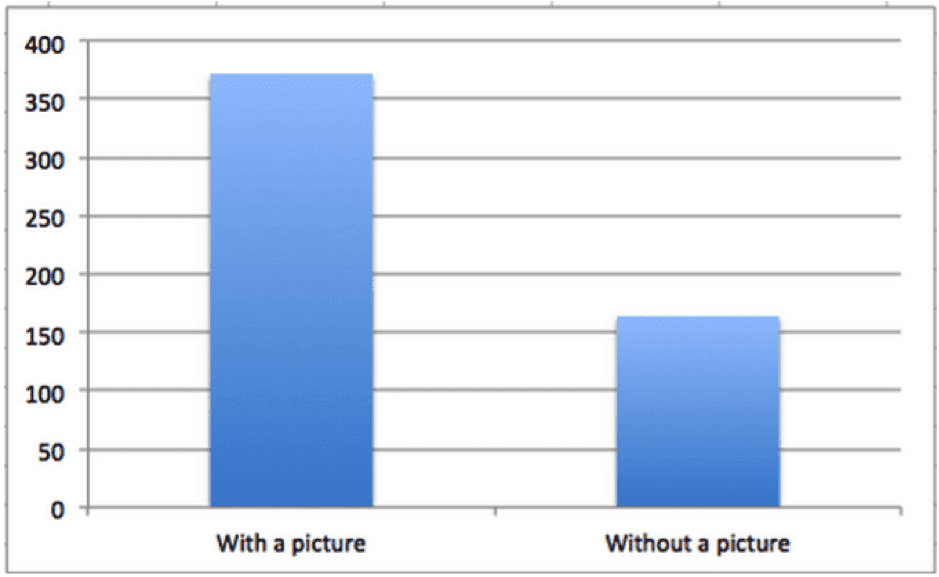
Buzzsumo looked at a 100 million Facebook updates resulting in this graph.
Be consistent with your imagery
Have you noticed that the best-performing brands on social media have a consistent look? If you want to be successful with your imagery, make sure there is uniformity, regardless of how many writers you have on your team producing content. This ensures your posts are easily recognized and not missed on the newsfeed by your followers and fans.
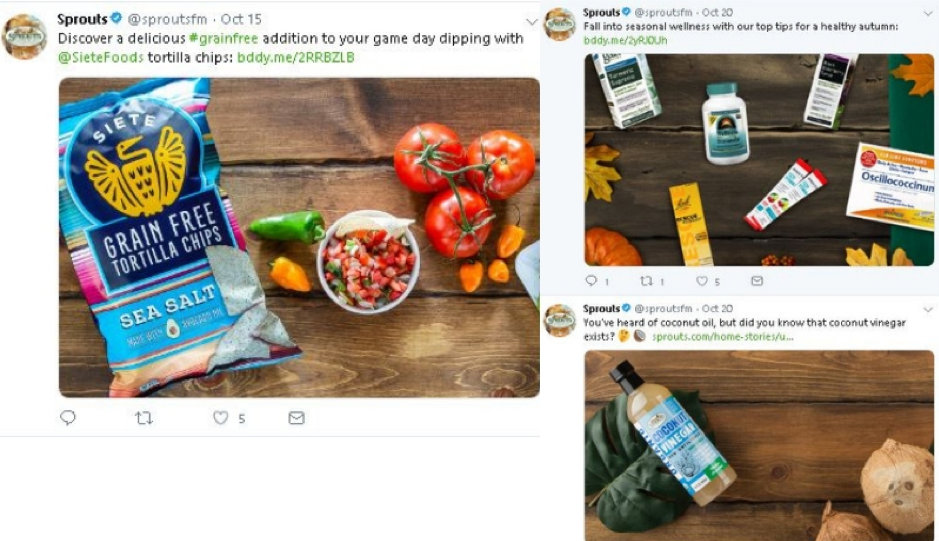
@sproutsfm is an excellent example of image consistency on Twitter.
Deliver value
Let’s be honest, human beings do not connect with products or abstract concepts. We connect with values and ideas that we can relate to, especially during the early stages of the buyer’s journey. Keep your editorial mission in mind and paint a clear picture so the audience you’re targeting has no doubt this content is right for them.
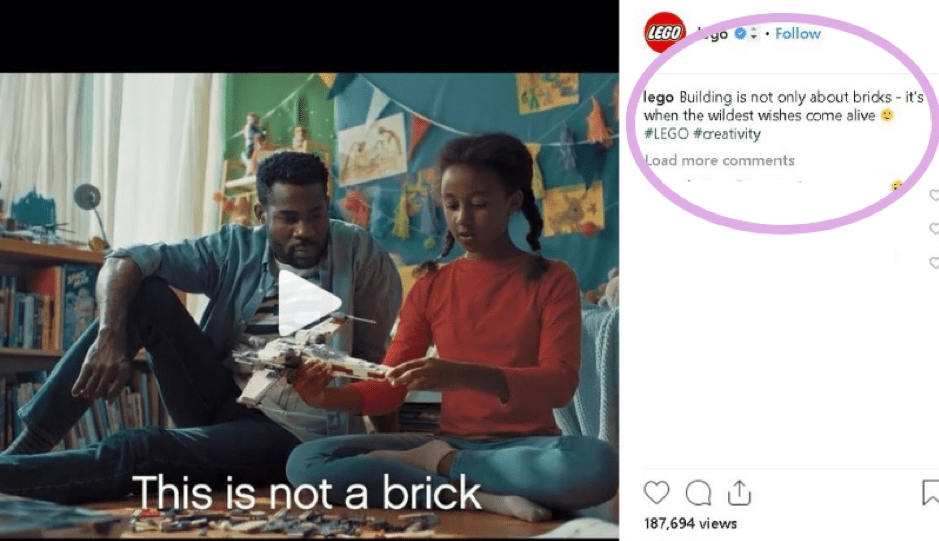
Use the power of snippets
If you are promoting a blog post or article, don’t just copy and paste the link into a post on your platform. Extract a powerful statement from the post and use this as the snippet that your audience will see.
Because you have done your homework and know your buyer persona, this snippet will be something that immediately grabs their attention and compels them to click. For Fertomol, it could be something like this:

Follow best practices
The best practices on social media platforms are not there to make your life difficult, but to make sure that users are not spammed and that they get the best value from publishers.
You actually have a better chance of reaching more of your target audience if you take the time to follow these best practices. What you should not be doing, however, is creating content purely to perform well based on the current algorithm. This could work well for a short time, but your visibility may tank when it inevitably changes. Focus first on producing content that your audience will love and this will naturally result in increased engagement.
Final thoughts
A successful content marketing campaign is measured by the level of engagement from your audience. The only way to increase engagement is to know who you are addressing and have a proper plan in place to deliver the right content to them when they need it.
Aligning your content with each stage of the buyer’s journey and creating a natural flow from each step to the next will ensure that your content is a success, regardless of where a potential buyer enters the funnel.
Alwi Suleiman is a content marketing expert at
Exposure Ninja. He has more than a decade of experience in digital marketing under his belt.
















